
 This article is part of a series created in partnership with the Behner Stiefel Center for Brazilian Studies at San Diego State University, to produce articles for the Digital Brazil Project on environmental justice in the favelas for RioOnWatch.
This article is part of a series created in partnership with the Behner Stiefel Center for Brazilian Studies at San Diego State University, to produce articles for the Digital Brazil Project on environmental justice in the favelas for RioOnWatch.
During September and October, amidst the 2024 elections and G20 preparations in Rio de Janeiro, environmental organizations and favela collectives organized to demand an end to what they term ‘climate caô’—a Rio de Janeiro slang word for falsehood, misinformation, or sweet talk. The groups called for unity in tackling air pollution caused by the steel company Ternium and proposed practical measures through the Summer Adaptation Plan to make Greater Rio and its favelas climate resilient.
In September, Rio’s Civil Society Demanded an End to the ‘Sweet Talk’ Around Climate Issues
On September 20 and 21, Fundição Progresso and the Climate Coalition‘s Climate March joined forces to occupy Lapa, in Rio’s Centro, for the 6th edition of Plant Rio – What Kind of Climate Is This? The events featured a series of joint actions as part of Global Climate Week (September 22-29), which mobilized environmental initiatives worldwide to demand urgent action from public officials on climate change. A range of educational and cultural activities explored topics such as climate and environmental issues, climate policies, the G20, and the UN’s 2030 Agenda for Sustainable Development, while showcasing initiatives by environmental leaders, collectives, and activists.
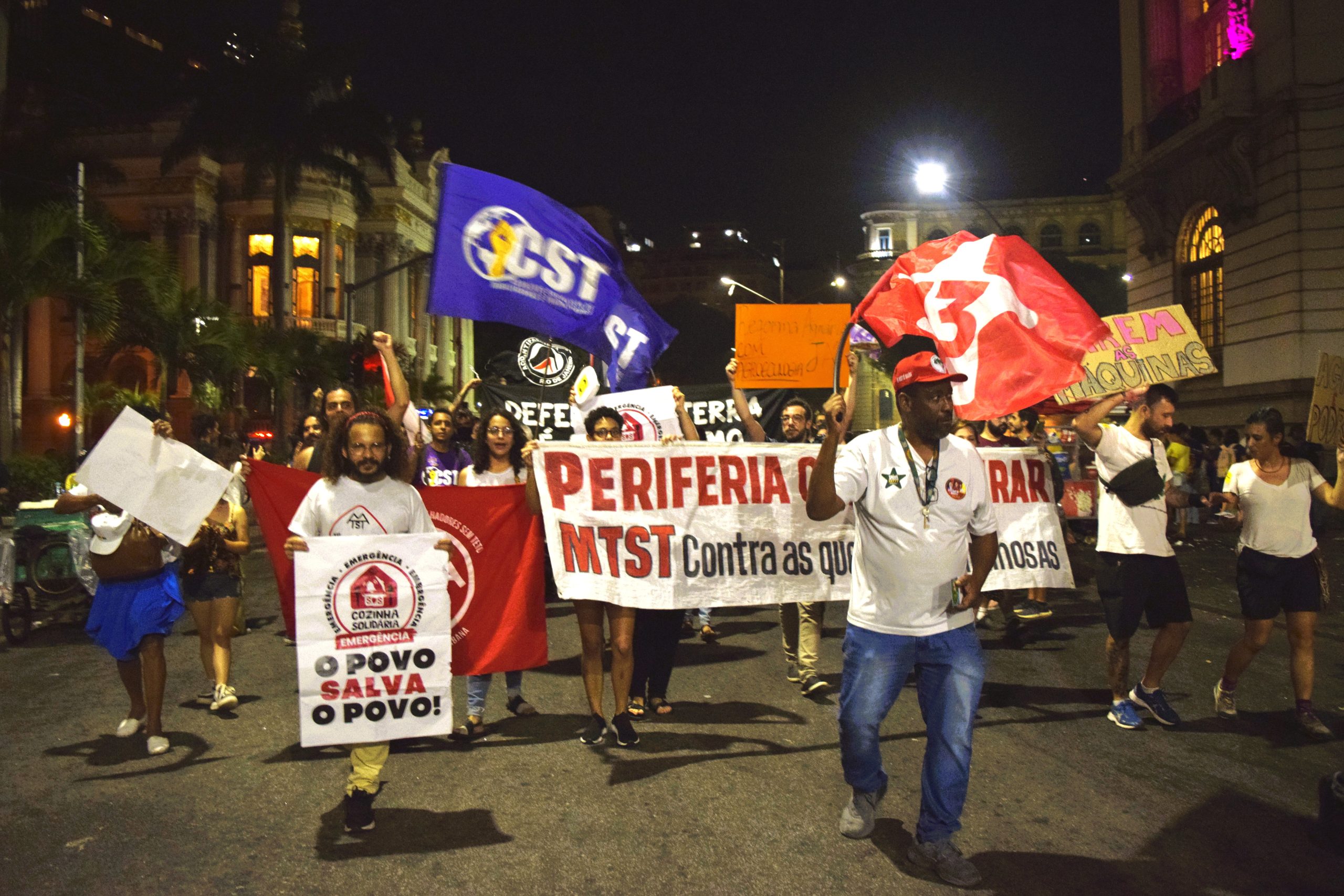
The following organizations came together to put a stop to the ongoing Climate Caô—or Climate Sweet Talk: Agroforestry Collective Action, Federation of Organizations for Social and Educational Assistance (FASE), Forum on Climate Change and Socio-Environmental Justice, Institute for Alternative Policies for the Southern Cone, Touca Brazil Association, Foucabrasil, Popular Monitoring Network for Sanitation and Health, National Coordination for the Articulation of Black Rural Quilombola Communities (CONAQ), Heinrich Böll Foundation, Emunah Institute, Percília Teles da Silva House of Arts and Culture, VG Farm Market, Pontifical Catholic University of Rio de Janeiro (PUC-Rio), BPC Socio-Environmental Platform, Specialized Group on Natural Disasters (Geden), Fluminense Federal University (UFF), Oswaldo Cruz Foundation (Fiocruz), Petrópolis House of Citizenship, Petrópolis Esperançar Project, Climate Action Institute, and Sepé Agroforestry.

The Climate Class, for example, was one of the activities offered, providing the public with an educational afternoon focused on the environment. As part of Plant Rio, the State of Rio de Janeiro Climate and Cities Coordination participated in discussion circles, including “‘The Latest on the Climate Issue in Rio de Janeiro.” Additionally, the Climate March brought around 2,000 people to Cinelândia, culminating in the launch of the “Rio is the Capital of Climate Caô (Climate Sweet Talk)” campaign and the unveiling of a panel at the historic Lapa Arches. During the event, three open letters addressed to public authorities were read aloud, co-authored by concerned groups, organizations, and citizens affected by the lack of effective environmental policies.
For climate activist Pedro Aranha, coordinator of the Climate Coalition and researcher at Fiocruz, addressing climate issues in Rio de Janeiro is equivalent to discussing survival.
“The water crisis and extreme heat have always been a reality in the favelas, but they will get worse. So, this Climate Class is about how we face these crises, and we already know that the grassroots movements are within the favelas. In the meantime, the government is building a climate adaptation plan with companies and not with communities.” — Pedro Aranha
According to Maureen Santos, political scientist and coordinator of the political nucleus at FASE, the Climate Class aimed to harness the momentum from Global Climate Mobilization Day. It served as a training ground, bringing together diverse knowledge from territories and ongoing resistance processes.
“Through FASE’s international actions, which are following the People’s Summit process toward COP30 and the Global Mobilization Week on climate finance and a future without fossil fuels, the possibility of holding decentralized activities in several countries emerged. Here in Brazil, we proposed this [Climate Class] in Rio de Janeiro, leveraging the momentum of the Climate March and the Climate Caô Campaign. We decided to converge all these dispersed activities into a single day.” — Maureen Santos
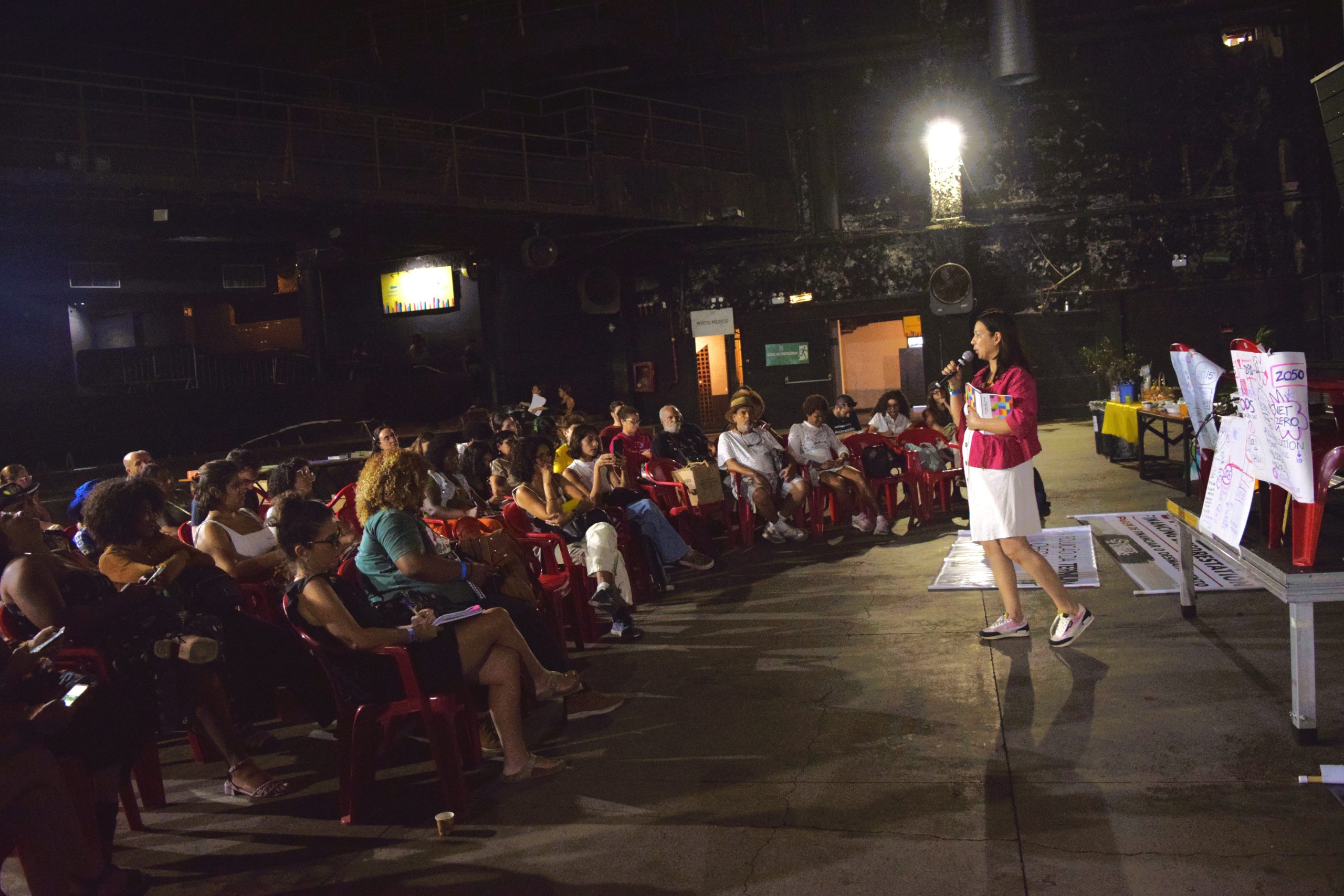
One of the victims of the heavy rains that struck Petrópolis in 2022 was Claudia Severino, a resident of the Quitandinha neighborhood. She shared how the support she received from the Petrópolis House of Citizenship project was crucial in helping her rebuild her life after the tragedy. Her story underscores the importance of the State in assisting victims through public policies, starting with social rent and eventually transitioning to public housing programs and resettlement in nearby, safe areas designed to withstand extreme weather events.
“Back when the rain came, [that tragedy] really affected our mental health… There’s this discussion group I’ve been part of since 2022, [and] it has been very helpful for us, [for those of us] who lost loved ones, who lost homes. I only lost my home. Now I’m living in subsidized housing, waiting to see if the authorities will fix my house so I can return, if they’ll build the retaining wall I’ve been waiting for. It’s just me and my three children; I’m a domestic worker.” — Claudia Severino
Neném Peixoto, a member of Geden, says that though tragedy is sometimes inevitable, it is imperative to create a culture of prevention.
“I believe we first need to explain to the community that we are living in a time of extremes. So, we need to create protocols to help us deal with this. For instance, individual protocols: how am I going to respond to something like this? What about family protocols? For example, should I have my belongings ready [for emergency evacuation in case of heavy rain]? Do I know my area? And, along the same lines, a community protocol: how can I prepare my community for this new reality? Disaster preparedness must be a goal today… it’s the new reality we are going to face.” — Neném Peixoto
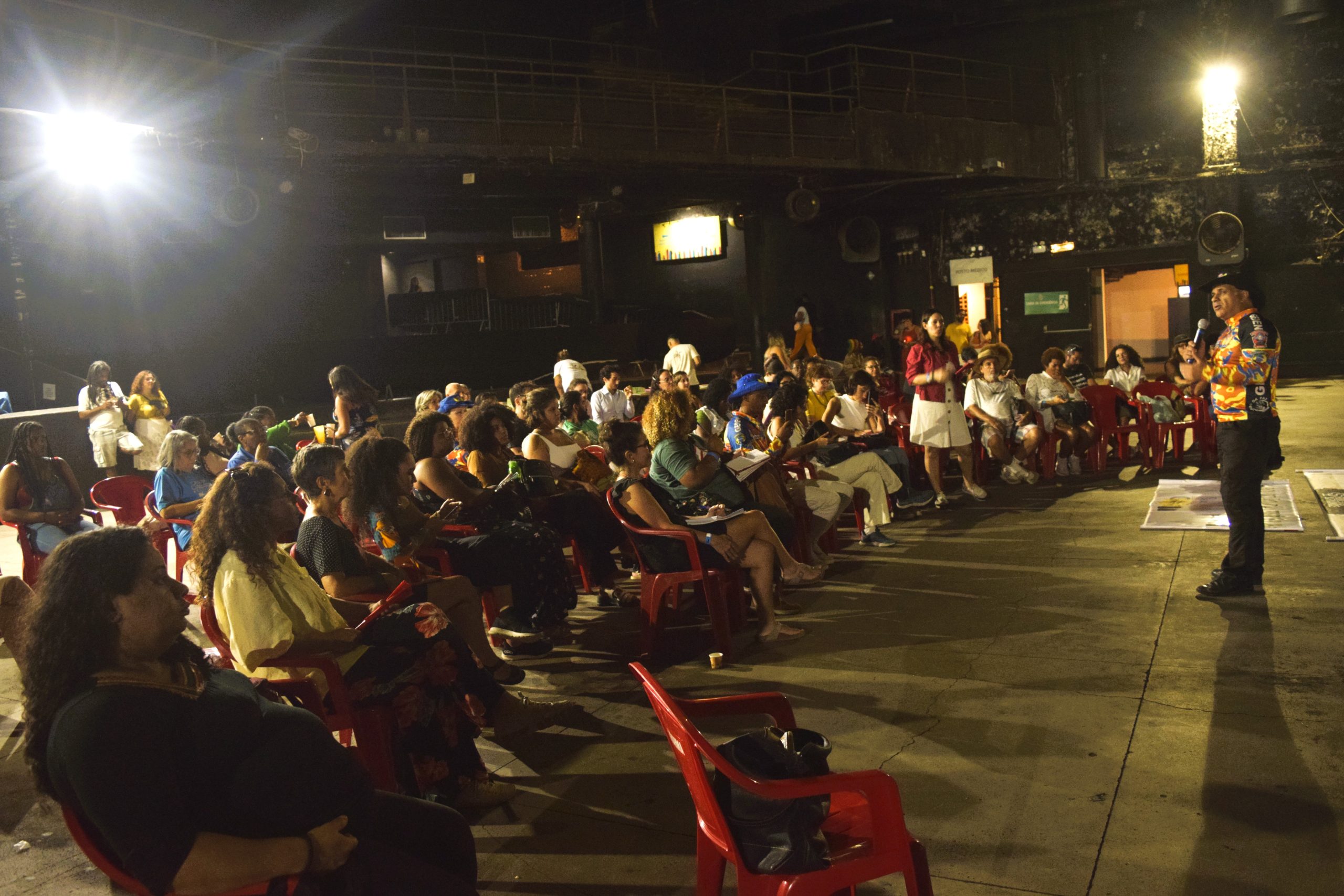
MC Mystika from Piabetá—a neighborhood in the sixth district of Magé, a municipality in Greater Rio’s Baixada Fluminense region—opened the class with a rhyme performance. She criticized the State’s negligence and the lack of a proper sanitation budget in the region where she lives.
“Many people there have lost their homes due to flooding, because the Magé city government never cleans the drains or anything like that. They bring in famous artists, but they don’t fix the real issues when there’s a flood, when there’s a tragedy, when a family loses their home.” — MC Mystika
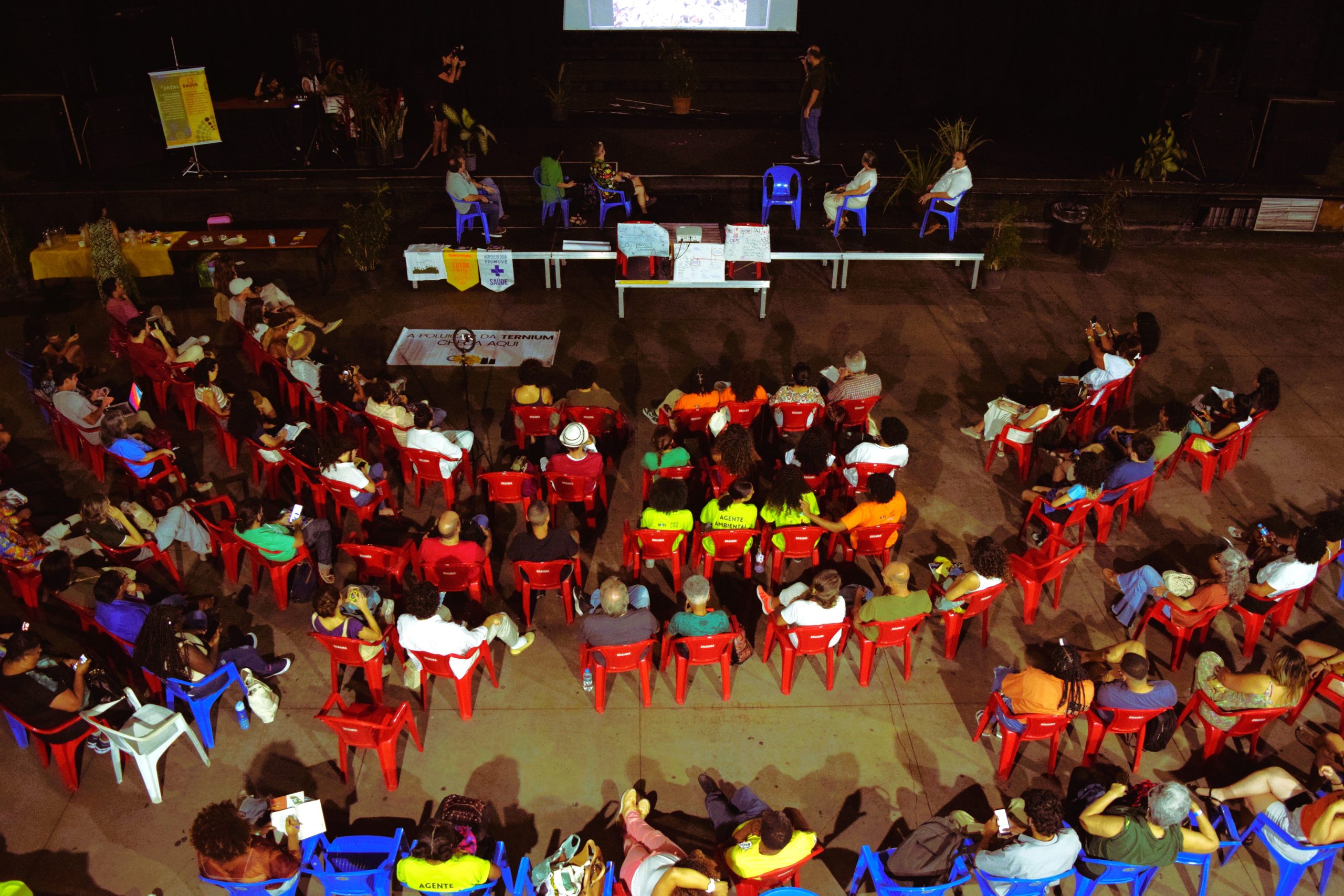
‘Rio Is the Capital of Climate Caô’—Rio Residents March for Climate in Cinelândia
The Climate March brought together various groups and public figures from the Greater Rio Metropolitan Region in front of Rio de Janeiro’s City Council. From there, participants marched to the Lapa Arches, where a banner with the campaign slogan was unfurled.
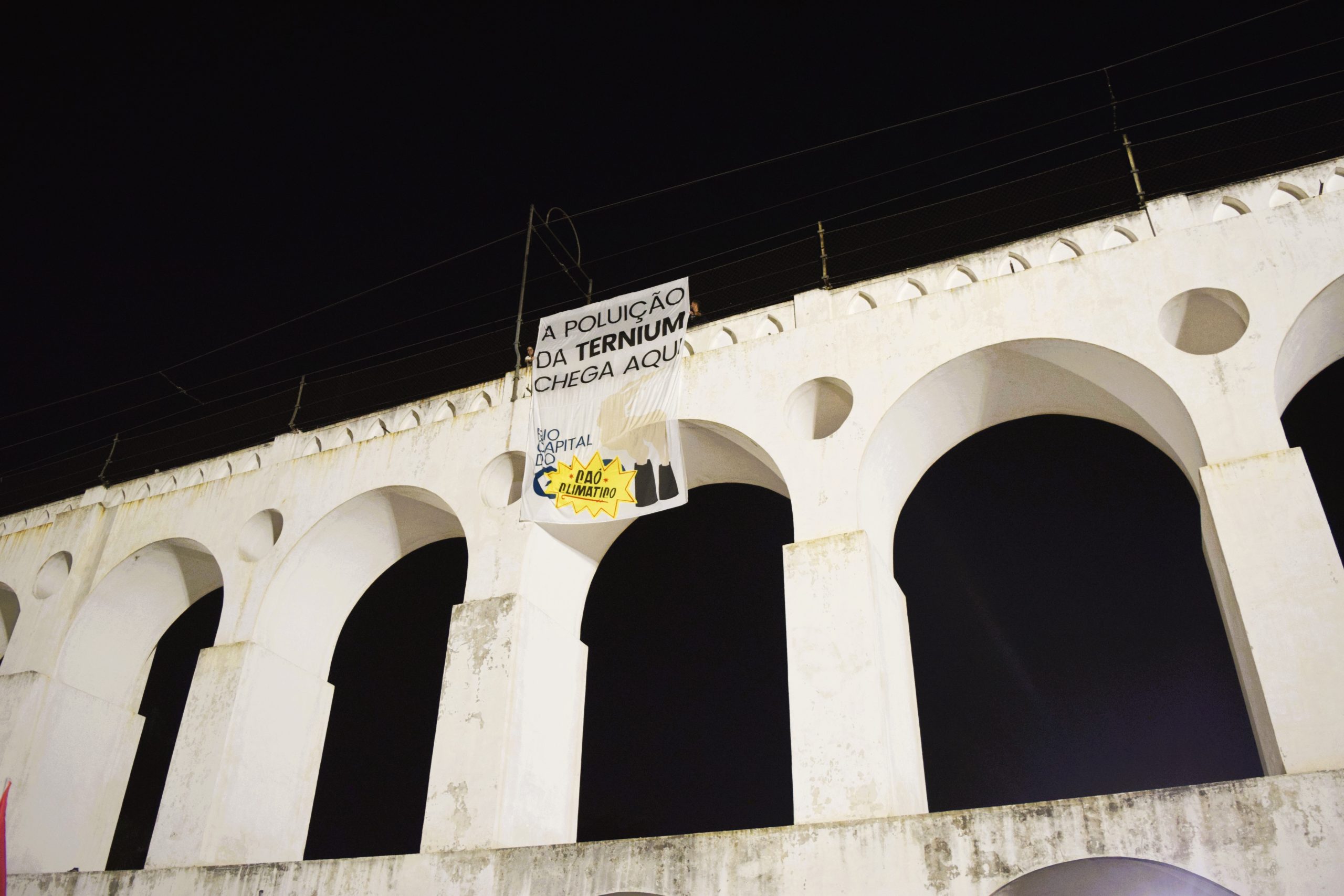
The event also served as a call for better environmental policies in Rio. One of the demands was to raise awareness about the high pollution levels caused by the steel company Ternium, formerly TKCSA, in Santa Cruz. Located in an area that was originally rural and has seen significant population growth in recent decades, this zone has also been used by Rio’s City Hall to resettle numerous families displaced from other regions before the 2016 Summer Olympics. Since its establishment, the company has drastically impacted air quality and increased the heat index.

The steel mill’s arrival and operations were denounced by Martha Trindade, a Black nurse and Santa Cruz resident who died from respiratory issues. Her activism was honored through the Martha Trindade Collective, which carries out grassroots environmental monitoring. Currently, the steel mills located in the Santa Cruz Industrial District do not have their greenhouse gas emissions properly accounted for. However, a report by the Centre for Research on Energy and Clean Air (CREA) revealed that the polluting microparticles emitted by Ternium, originating in the farthest part of Rio’s West Zone, spread across the entire Greater Rio Metropolitan Region and beyond.
Ver essa foto no Instagram
Beatriz Alves, coordinator of the Martha Trindade Collective, explains that the group is still fighting to demonstrate the steel mill’s harmful impacts on the surrounding population.
“Many people see the fight in Santa Cruz as if it were ours alone… [However,] the data released by CREA [professional engineers’ association] and the reports produced by the collective show that it is not just our fight. It’s obvious that it’s very easy for the mayor to say the City is clean if he doesn’t account for the biggest polluters. Given the challenges we face in immunological surveillance in the municipality—because we don’t have access to data on the illnesses that have affected the population since the steel mill was established, even though residents report worsening air quality, difficulty breathing, respiratory issues in children, and a rise in cancer in the area—we still lack access to this information. That’s why it is so important for this mobilization to take place downtown, with other people who are not from our area—understanding, participating, finding out what is happening, and embracing our fight!” — Beatriz Alves
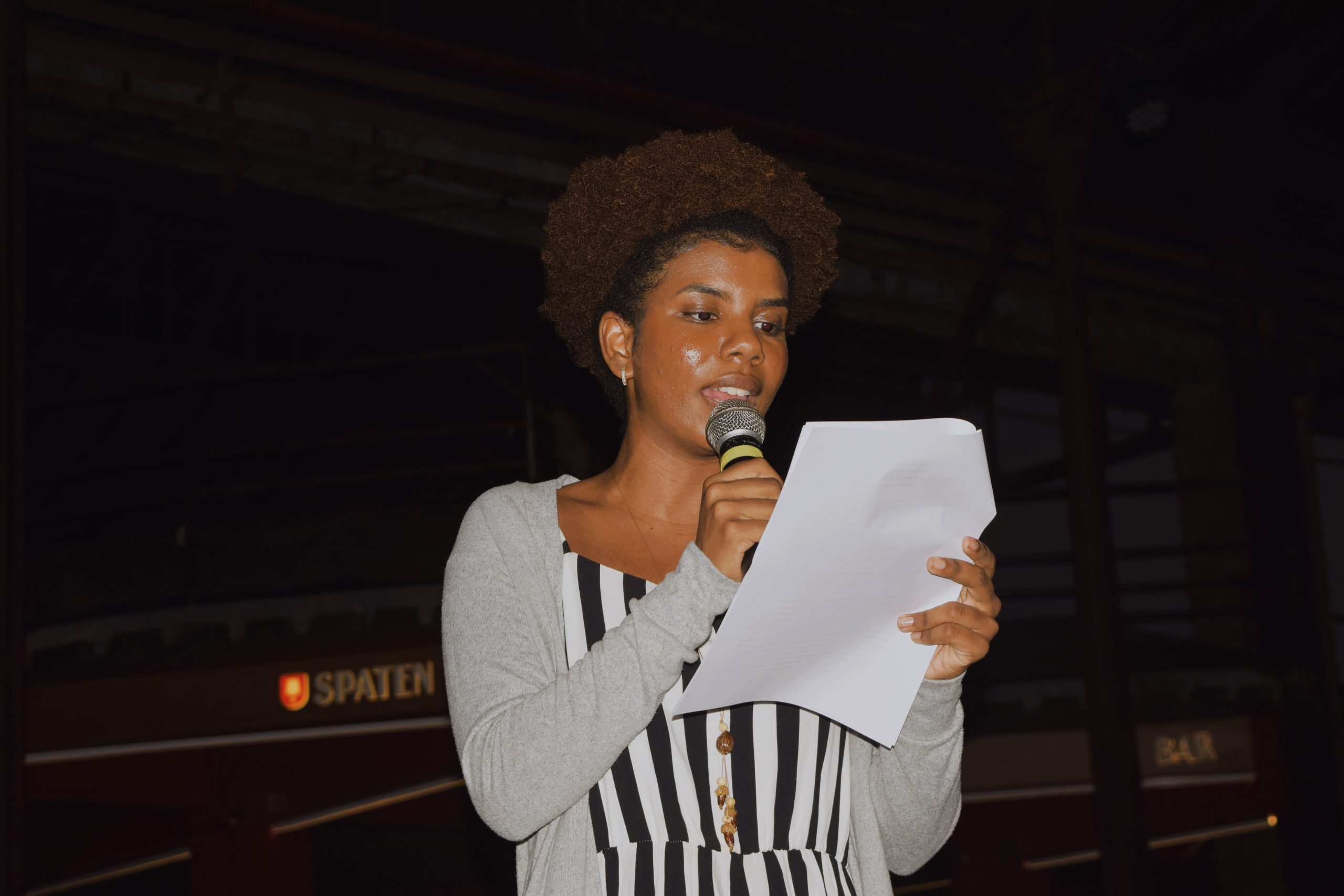
The mobilization ended with the reading of three letters at Fundição Progresso: the Letter from the Residents of Santa Cruz; the Letter on Policies and Actions for Mitigation and Adaptation to Climate Change from the State of Rio de Janeiro Climate, Forest, Countryside, and City Coordination; and the AARJ Political Letter – 2024 Municipal Elections, prepared by the Rio de Janeiro Agroecology Coordination (AARJ). All three summarize collective proposals to put an end to climate caô—continuous deceit and stalling practices regarding climate issues—and advocate for public policies that make peripheries and favelas resilient to climate impacts. It is imperative to adopt measures grounded in environmental policies that address the population’s demands and the specific needs of each area, ensuring just and effective improvements for the peripheries.
In October, Favela Residents Launched the Summer Adaptation Plan in Penha
On October 26, a little over a month after the demonstrations in Lapa and just before the start of the anticipated summer storms, the Climate of Change Coalition gathered about 200 attendees—including students, activists, and environmental institutions—at the Arena Carioca Carlos Roberto de Oliveira, also known as Arena Dicró, in Penha, Rio’s North Zone. The Coalition, composed of organizations from peripheral areas leading the fight against environmental racism and advocating for climate adaptation, launched the Adaptation Plan We Want Before Next Summer. The event celebrated the graduation of participants from the Summer Adaptation Plan Cohort and the regional working groups, the methodology chosen to advance the Plan’s development.
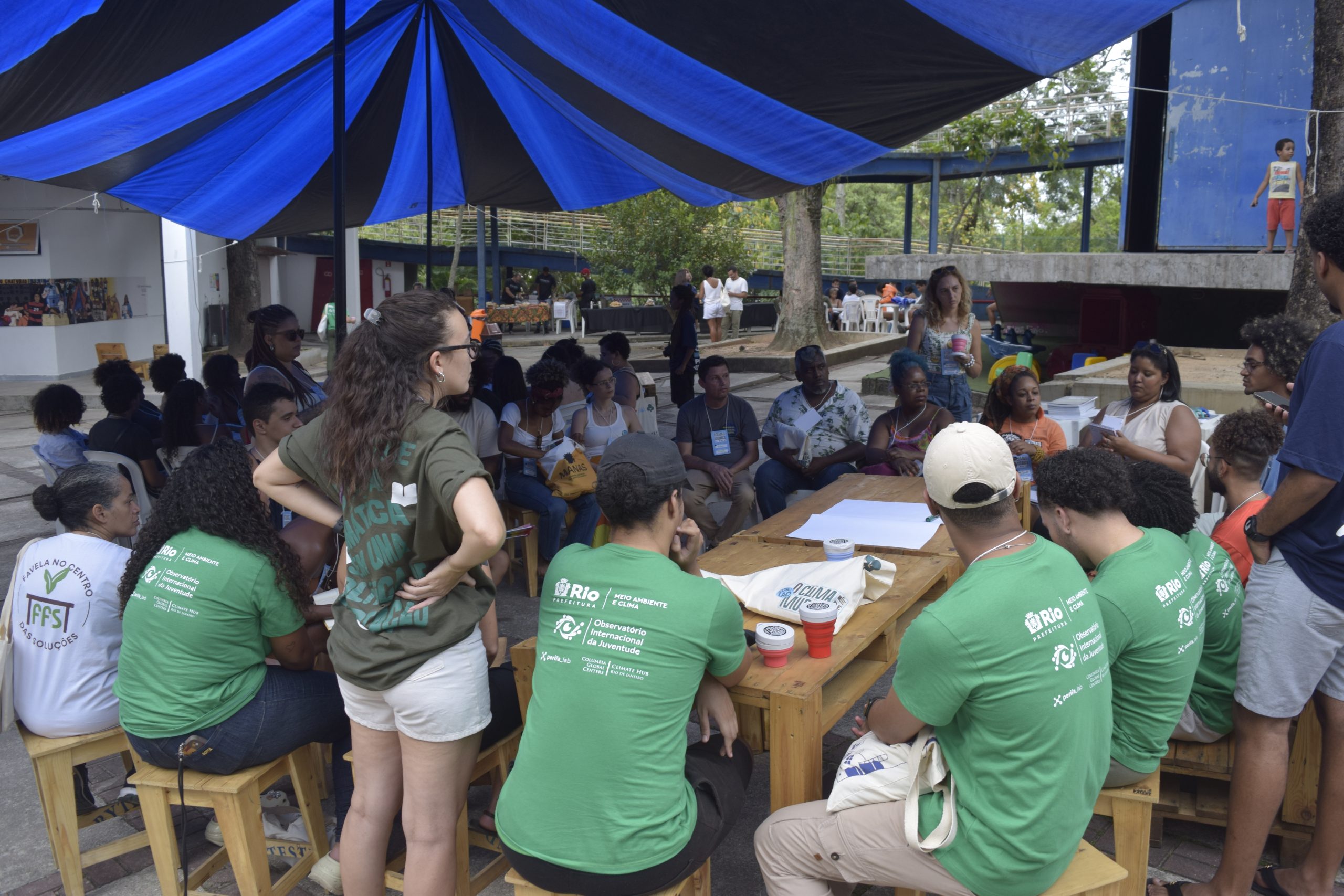
The event was supported by the Casa Socioambiental Fund, My Rio, Visão Coop, Cipó Platform, Heinrich Böll Foundation, Donna Natureza, and Observatório de Favelas.
One of the graduates, Edith Medeiros, 28, a resident of Piscinão de Ramos, says that discussing climate issues in the favela is a way to raise local awareness about climate change.
“We can feel it, we can’t avoid it anymore. It’s more than urgent, right? That’s why I called it an SOS, a call for help… to understand that we’re living in a totally polluted place… If we planted, if we had more plants… So, it’s important to notice these things [practical solutions] that are already out there and help make them better, to add to the ways of reducing this damage [from extreme weather events]… There’s no escaping it, but we can keep it from getting worse.” — Edith Medeiros
Matheus Teixeira, 26, a resident of Morro da Serrinha in Madureira and member of the Young Climate Negotiators group, explains that for him, the training was a gateway to fighting for the rights of his community.
“I think the biggest challenge we face there [in Serrinha] is summer itself. People struggle a lot with the heat, and there’s a constant lack of water. In fact, this weekend, we didn’t have water at all. So, this is what’s really been affecting the area where I live. The importance of this issue is that, at the end of the day, it’s really the poor, the people from the favelas, who are hit the hardest by the rain, the heat, and other events we’re experiencing.” — Matheus Teixeira
With proposals developed by students from the Summer Adaptation Plan Cohort, the Plan provides recommendations for addressing the main issues facing the state of Rio. The solutions are designed to be implemented immediately. It aims to foster a culture of adaptation, encouraging authorities to act before next summer and its rains to prevent tragedies, rather than focusing solely on post-tragedy relief. The document also highlights the incidents that most affect the favelas, such as floods and landslides.
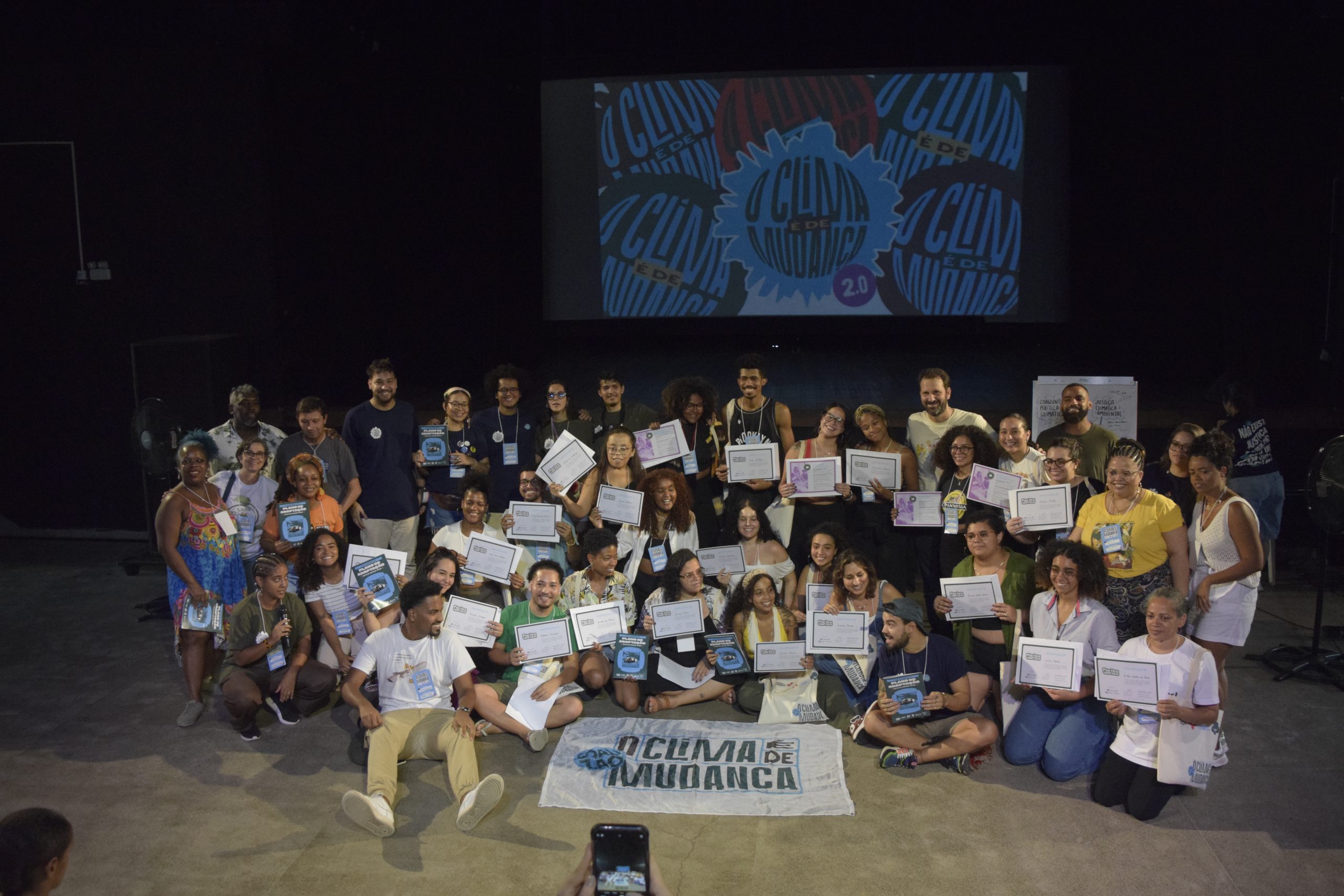
The Summer Adaptation Plan was structured around six axes:
- Adaptation Infrastructure
- Political and Climate Context
- Mobilization and Political Advocacy
- Climate and Environmental Justice
- Risk Awareness Culture
- What We Observe in Public Planning for Climate Emergencies.
Each axis contextualizes the main challenges, causes, and actionable steps to address the devastating effects of climate change. Among the Plan’s practical suggestions, aimed at avoiding the enormous human and economic toll of extreme weather events, are:
- Preparedness for climate emergencies, including community brigades to respond during and after climate events;
- Development of risk and vulnerability maps in territories, identifying flood zones, landslide areas, and other critical risk locations;
- Climate-resilient infrastructure, featuring the installation of sustainable urban drainage systems (SUDS) such as retention basins, permeable paving, and rain gardens to enhance water absorption and prevent flooding, among other solutions;
- Resilience of essential infrastructure, ensuring that hospitals, schools, public transit systems, and energy grids can continue operating during climate emergencies;
- Urgent adaptations in areas with high population density and vulnerable infrastructure, using low-cost technological solutions such as rainwater harvesting systems, green roofs, and temporary barrier and drainage systems, which can be applied quickly, at a low cost, and with a significant impact on risk reduction.
The Plan calls for favelas to be urgently prioritized in order to reduce the number of deaths due to extreme weather events. According to the document, heavy rains devastated residents of the Greater Rio Metropolitan Region in January 2024: around 48,000 people were directly affected, over 10,000 lost their homes, and at least 12 died.
Tired of these events happening more and more frequently at the start of each year, the Climate of Change Coalition and partners launched the “Rio Is Not Disney” campaign. This is an expression used in the favelas to say that life in this city is not easy—it’s not an amusement park. It became a slogan to demand climate resilience policies for the favelas and peripheries. It was also a pointed critique of Governor Cláudio Castro, who spent his January 2024 vacation in Walt Disney World, while tens of thousands of Rio residents were left homeless.
According to the Summer Adaptation Plan, approximately 94,000 housing units were damaged by extreme weather events, and 887 homes were destroyed between 2020 and 2023, resulting in losses estimated at R$1.1 billion (US$ 190.5 million). Of this total, R$935 million (US$ 162 million) pertains to the Greater Rio Metropolitan Region, which has the state’s highest concentration of favelas.
The gathering also demonstrated that favelas hold solutions to the structural problems of Rio de Janeiro’s society. However, these creative, low-cost, and replicable solutions must be included in legislative debates and public budgets. Above all, they need to be democratized and made accessible to as many residents as possible. This was one of the key points emphasized by Vinicius Lopes, 25, a student who grew up in Conjunto Esperança in the Maré favela complex and a member of the Climate of Change Coalition and Cipó Platform.
“The main point is for us to expand our work as a network. Only by building a peripheral and favela-based network will we be able to access this information. This is a very important point… the government can say, ‘Oh, the information is on the website, look for it on such-and-such portal, under such-and-such tab,’ but that doesn’t reach us. Many times, the information we get comes through our partners, organizations, or community leaders… but we don’t access it directly, and if we don’t access it, we don’t participate. And the government says there is already participation [like in the G20]. [‘Participation’] in heavy quotation marks, right? It’s really about putting pressure on these institutions and understanding that, many times, we can’t do it alone, but we can do it by moving as a team, with everyone supporting each other.” — Vinicius Lopes
The climate challenges imposed on favelas are numerous, reflecting both structural and environmental racism. They stem from a complex system that perpetuates inequality and political neglect. Despite this, these communities refuse to accept such a reality and continuously reinvent themselves, in a determined pursuit of the right to live well and exist with dignity. Contrary to the status quo, governments must understand that solutions will not come from the top down but from the grassroots, from the inside out, through collective participation, care for the environment, and respect for nature and human life—regardless of zip code.
About the author: Amanda Baroni Lopes is a journalism student at Unicarioca and was part of the first Journalism Laboratory of Maré community newspaper Maré de Notícias. She is the author of the Anti-Harassment Guide on Breaking, a handbook that explains what is and isn’t harassment to the Hip Hop audience and provides guidance on what to do in these situations. Lopes is from Morro do Timbau and currently lives in Vila do João, both favelas within the larger Maré favela complex.
